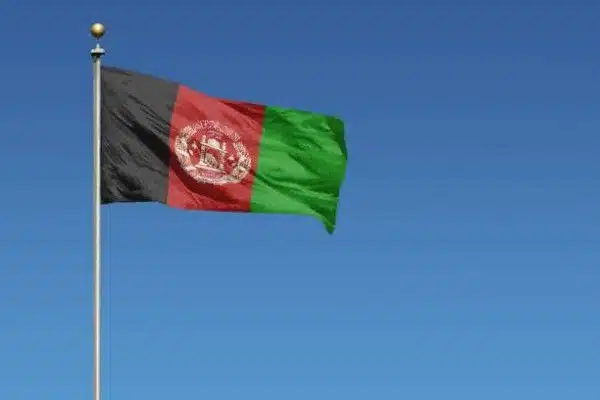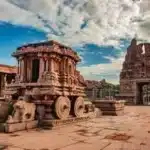Afghanistan, a landlocked country nestled at the crossroads of Central and South Asia, has a history as rugged and resilient as its mountains. Often misunderstood or seen only through the lens of conflict, Afghanistan’s past is a rich tapestry of empires, culture, trade, war, and survival. From the days of ancient civilizations to the modern challenges it faces, the country’s story is one of enduring courage, timeless culture, and unwavering strength.
Ancient Roots: The Cradle of Civilizations
Afghanistan’s story begins thousands of years ago. It was home to ancient civilizations such as the Indus Valley, Bactria, and Gandhara, making it a key part of the Silk Road, the historic trade route that connected East and West.
Archaeological evidence from sites like Tepe Fullol and Ai-Khanoum reveals that Afghanistan was once a thriving center of art, philosophy, and commerce. This land, blessed with strategic location and natural beauty, attracted some of the world’s greatest conquerors.
Conquests and Empires: The Crossroads of Kings
Few places on Earth have seen as many powerful armies march through their lands as Afghanistan.
Alexander the Great conquered it in the 4th century BCE.
The Maurya Empire spread Buddhism across the region.
Later, the Kushan Empire turned it into a hub of Buddhist learning and Greco-Roman art.
Arab Muslims introduced Islam in the 7th century, forever shaping the region’s identity.
In the centuries that followed, Afghanistan became a battleground for mighty dynasties—Ghaznavids, Ghurids, Mughals, and Timurids—each leaving their cultural footprint, from intricate architecture to timeless poetry.
The Birth of a Nation: Modern Afghanistan Emerges
By the 18th century, Afghanistan began to form as a nation-state. Ahmad Shah Durrani, often called the founder of modern Afghanistan, unified the Pashtun tribes in 1747 and created a powerful kingdom. Kabul was declared the capital, and Afghanistan emerged as a proud, independent country in a region dominated by rival empires.
Yet, Afghanistan’s location made it a pawn in the Great Game—the political struggle between British India and Tsarist Russia during the 19th century. The British invaded multiple times, leading to the Anglo-Afghan Wars. Despite being outgunned, Afghans fought fiercely to preserve their land, earning a reputation for being unconquerable.
Independence and Monarchy: A Time of Hope
In 1919, following the Third Anglo-Afghan War, Afghanistan regained full independence under King Amanullah Khan. He sought to modernize the country—granting women rights, establishing schools, and building infrastructure. But modernization clashed with conservative forces, and political instability returned.
The 20th century saw several monarchs, coups, and republics rise and fall. Afghanistan tried to walk a delicate line between tradition and reform, always with one eye on the external pressures from Cold War powers.
Soviet Invasion and Civil War: A Country in Flames
In 1979, the Soviet Union invaded Afghanistan to support its communist allies. This invasion led to a devastating 10-year war, where Afghan mujahideen fighters—armed with courage and foreign support—resisted the Soviets. The war cost millions of lives and turned thriving cities into ruins.
When the Soviets finally withdrew in 1989, civil war erupted. Different factions, warlords, and militias fought for control. The once-proud nation was torn apart, its people trapped in a never-ending cycle of violence and heartbreak.
The Rise of the Taliban and U.S. Intervention
In the 1990s, the Taliban, a radical Islamic group, rose to power promising stability. They imposed a strict version of Islamic law, banned women from education, and executed harsh punishments. Though some welcomed the end of chaos, the regime brought fear and oppression.
Then came September 11, 2001. The Taliban’s refusal to hand over Osama bin Laden led to a U.S.-led invasion. Afghanistan became the epicenter of the “War on Terror.” A new government formed, democratic elections were held, and billions in aid flowed into the country.
Despite these efforts, Afghanistan struggled with corruption, insurgency, and deep ethnic divides. The war lasted for 20 years—the longest conflict in U.S. history—before U.S. troops finally withdrew in August 2021.
Taliban Return and an Uncertain Future
In 2021, as foreign troops departed, the Taliban swiftly regained control. The images of desperate people at Kabul Airport stunned the world. Fear gripped the nation again. Girls’ schools were shut, and women’s rights were rolled back.
Yet, amid the silence, the Afghan people continue to resist in small, powerful ways. Underground schools teach young girls. Journalists report from the shadows. The youth, who grew up with smartphones and social media, refuse to let their voices be silenced.
The Heart of Afghanistan: Its People
What defines Afghanistan isn’t just its wars or politics—it’s its people. People who have endured endless grief, yet still hold on to hope. Farmers in the countryside, poets in exile, children dreaming of peace, and mothers educating their daughters in secret—all contribute to an unbreakable spirit that refuses to die.
The Afghan diaspora continues to share their stories, advocate for freedom, and support their families back home. Through tears and trials, the heart of Afghanistan beats strong.
Conclusion:
A Land of Endless StrengthAfghanistan’s history is not just one of invasion and conflict—it’s a powerful saga of survival. A land that has seen empires rise and fall, but where the soul of the people remains unshaken.
As the world watches, let us remember Afghanistan not just as a war-torn land, but as a place of ancient wisdom, epic resilience, and a people who never stop hoping for a better tomorrow.


